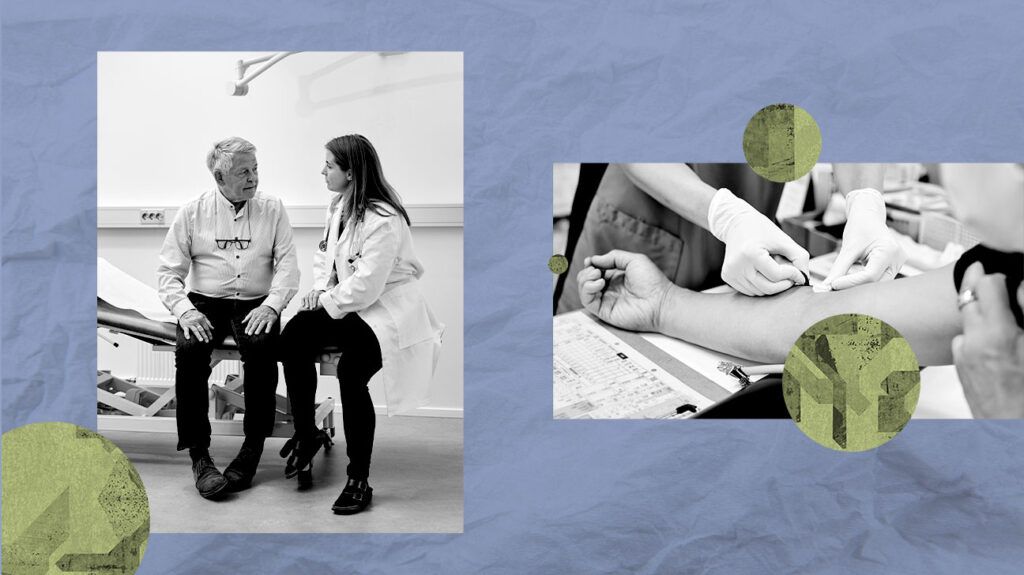Doctors typically use different methods based on symptoms and medical history to test for gallbladder issues. These include physical exams, blood tests, ultrasound, and other imaging tests.
In particular, a hepatobiliary iminodiacetic acid (HIDA) scan, or cholescintigraphy, can examine the gallbladder more closely. An endoscopic ultrasound (EUS) is particularly useful for identifying small gallstones or assessing cancerous growths.
This article looks at the different tests for gallbladder issues and discusses which issues may arise.

Doctors use several diagnostic tests to evaluate gallbladder functioning, each helping to assess different aspects of gallbladder health and bile flow. Here are the primary tests used:
- Physical examination: The doctor may check for pain in the abdomen, particularly in the upper right side, which could indicate gallbladder problems.
- Blood tests: These can check for signs of infection, inflammation, or liver function abnormalities related to gallbladder disease.
- Ultrasound: This is the first-line imaging technique
used to detect gallstones, check for signs of inflammation, and assess the size and shape of the gallbladder. - Hepatobiliary iminodiacetic acid (HIDA) scan: Also
known as a cholescintigraphy, this is a nuclear imaging test that assesses the gallbladder’s function. Doctors inject a radioactive tracer into the body, which the liver processes and sends to the gallbladder along with bile. A special camera tracks the flow of this tracer from the liver to the gallbladder and into the small intestine. This test measures how well the gallbladder is emptying. - Endoscopic ultrasound (EUS): This combines endoscopy and ultrasound to get more detailed images of the gallbladder and surrounding organs. It is particularly useful for identifying small gallstones or assessing cancerous growths.
- Magnetic resonance cholangiopancreatography (MRCP): This type of MRI produces detailed images of the bile ducts, pancreas, and gallbladder. MRCP looks for blockages or abnormalities in the bile ducts.
- Endoscopic retrograde cholangiopancreatography (ERCP): This procedure
involves using an endoscope and X-rays to examine the bile and pancreatic ducts. It is often for therapeutic purposes, such as removing stones from the bile duct, but it can also provide valuable diagnostic information.
Doctors select the appropriate tests based on the person’s specific symptoms and medical history. They help diagnose the gallbladder’s function and detect structural abnormalities and other associated conditions.
Some typical symptoms of gallbladder problems
- abdominal pain
- nausea and vomiting
- fever or chills
- jaundice
- changes in urine and stool
- bloating
- indigestion, heartburn, and excessive gas
The gallbladder can experience several types of problems, many of which are related to gallstones, but some can occur independently. Here are the most common gallbladder issues:
- Gallstones (cholelithiasis): These are small, hard deposits that form inside the gallbladder. They consist of cholesterol, bile salts, and calcium. Gallstones can vary in size and may remain asymptomatic or cause significant discomfort and complications if they block bile flow.
- Cholecystitis (gallbladder inflammation): Gallstones blocking the ducts leading out of the gallbladder often cause this, resulting in bile buildup and inflammation. This can be acute (sudden and severe) or chronic (long-standing).
- Choledocholithiasis (bile duct stones): Occurs when gallstones pass from the gallbladder into the bile ducts. This
can cause obstruction, leading to severe pain, jaundice, and liver enzyme abnormalities. - Gallbladder polyps: These are
growths that emerge from the lining of the gallbladder. Most are benign, but some can be cancerous or may increase the risk of gallbladder cancer. - Biliary dyskinesia: This is a condition where the gallbladder does not empty bile correctly due to a malfunction in the movement. It can cause pain similar to that caused by gallstones but without the presence of stones.
- Acute acalculous gallbladder disease: This is inflammation of the gallbladder without the presence of stones, often seen in critically ill patients, such as those with severe infections or after major surgery.
- Gallbladder cancer: Although rare, gallbladder cancer
can develop , often discovered late because it does not cause symptoms in the early stages. - Cholangitis: Inflammation of the bile ducts,
usually due to a bacterial infection, which can occur when the ducts are blocked by gallstones or tumors.
The “five Fs” is a mnemonic used in the medical field to help people patients remember the risk factors commonly associated with gallstone formation, a key aspect of gallbladder disease.
These factors are:
- Female: Women are more likely to develop gallstones than men due in part to the effects of estrogen on bile composition.
- Fat: Being overweight or having obesity increases the risk of gallstones, as higher body fat can alter bile acid secretion and increase cholesterol levels in bile.
- Forty: The risk of developing gallstones increases with age, particularly once people reach their 40s.
- Fertile: Pregnancy increases estrogen levels, which can increase cholesterol levels in bile and decrease gallbladder movement, leading to gallstone formation.
- Family: This broadly indicates genetic and ethnic predispositions to gallbladder disease.
Several other medical conditions can mimic gallbladder problems due to the similarity of their symptoms, particularly abdominal pain.
Distinguishing between these conditions often requires detailed diagnostic testing. Some conditions that can be mistaken for gallbladder issues
Treating gallbladder issues depends largely on the type and severity of the problem diagnosed. Some common treatments for gallbladder-related conditions might include:
- medication
- surgery
- monitoring
removal of the gallbladder- supportive care
In general, the outlook for most people with gallbladder-related conditions is good when timely and appropriate interventions are available.
Surgical options, particularly laparoscopic cholecystectomy, have made the
However, as with all surgical procedures, individual factors such as the person’s overall health, age, and the presence of other medical conditions play a significant role in recovery and prognosis.
Medical evaluation and diagnostic imaging are critical for properly identifying and managing gallbladder problems. They help diagnose not just the gallbladder’s function but also detect structural abnormalities and other associated conditions.
